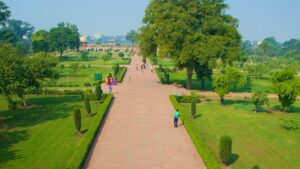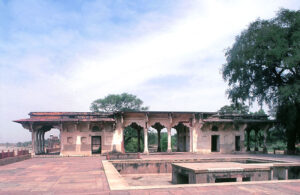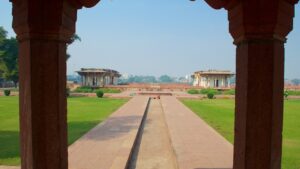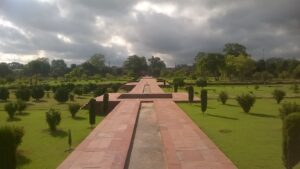
The Mughals were responsible for the construction of a number of forts, palaces, tombs and gardens. The Mughal gardens of pleasure were especially noteworthy. In these gardens of pleasure, the Mughal rulers tried to reincarnate the image of paradise as conceptualized by most Islamic texts. One of these gardens is the Rambagh Gardens located about five kilometres northeast of the Taj Mahal in Agra.

The Rambagh Gardens were established by Babur and later renovated by Nur Jahan, wife of Jahangir and one of the most influential Mughal empresses. Babur was temporarily buried there before being interred in Kabul. Jahangir waited in the garden in early March 1621 for the most astrologically auspicious hour for him to enter Agra after he took the Fort of Kangra. The preserved, surviving architecture dates to his reign and demonstrates the skill of his wife Nur Jahan as a garden designer.

The name is a corruption of the Persian Aaram Bagh meaning ‘Garden of Rest’. It is also variously known as Bagh-i Nur Afshan ‘Light-Scattering Garden’, Aalsi Bagh or ‘Lazy Garden’: According to legend, Emperor Akbar proposed to his third wife, who was a gardener there, by lying idle for 6 days until she agreed to marry him.
The garden is a Persian garden, where pathways and canals divide the garden to represent the Islamic ideal of paradise, an abundant garden through which rivers flow. The Aram Bagh provides an example of a variant of the charbagh in which water cascades down three terraces in a sequence of cascades.

Two viewing pavilions face the Yamuna River and incorporate a subterranean ‘tahkhana’ which was used during the hot summers to provide relief for visitors. The garden has numerous water courses and fountains.
source:
https://en.wikipedia.org/wiki/Ram_Bagh
http://www.indianholiday.com/tourist-attraction/agra/gardens-in-agra/rambagh-gardens.html
https://www.expedia.co.in/Ram-Bagh-Agra.d6169244.Attraction


